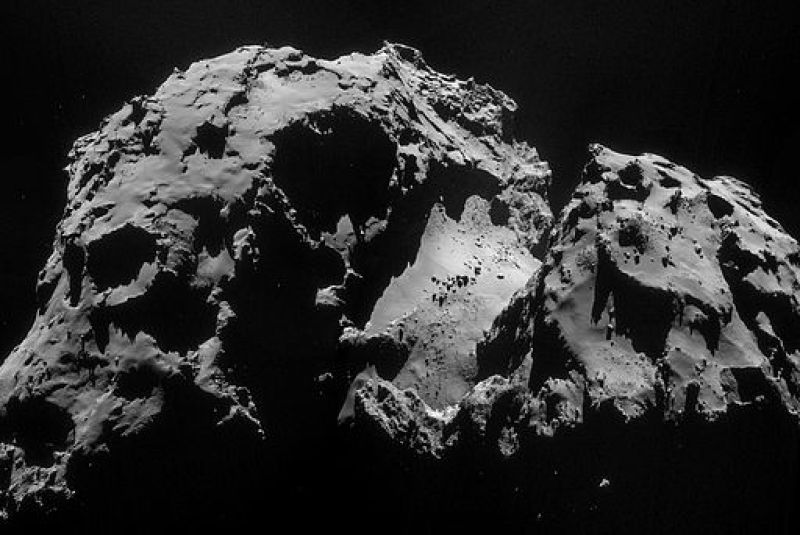

ESA's Philae probe sent back data before going into hibernation on Comet 67P. Scientists are hopeful.
Last week, the ESA placed a probe on a moving comet and accomplished a new feat for mankind. On Monday, the Wall Street Journal reported that the Philae lander transmitted data of Comet 67P's atmosphere, which contains the Carbon atom. Scientists confirmed the detection of Carbon molecules on the comet's surface, reports BBC News.
The presence of the Carbon atom, albeit the complexity and type of the molecule are undisclosed, is promising to scientists, since Carbon is the building block of organic matter. Scientists are hopeful that the comet will provide insight into the contribution comets give organic life in planets such as Earth.
The atmospheric data was acquired through a German instrument onboard the Philae probe that analyzes the atmosphere of the comet through "sniffing."
Data also suggests that the comet is composed of a layer of dust about 10-20 cm thick, a layer of ice as hard as sandstone, and a porous material underneath. The probe is equipped with a drill that is intended to analyze soil samples, but the premature hibernation of the probe occurred before a sample could be analyzed and sent back to the ESA.
Philae unfortunately ran out of power 60 hours into the operation. The battery powering the probe was expected to receive 7 hours of sunlight in order to recharge, but only received 1.5 hours. The atmospheric analysis was transmitted to the ESA despite the battery problem.
Despite the problem, scientists are pleased with the results thus far.
"This machine performed magnificently under tough conditions, and we can be fully proud of the incredible scientific success Philae has delivered," Stephan Ulamec, landing manager of Philae, told the Wall Street Journal.
Professor Mark McCaughrean, senior science adviser of the ESA, told BBC News, "We didn't necessarily see many organics in the signal. That could be because we didn't manage to pick up a sample. But what we know is that the drill went down to its full extent and came back up again."
The probe landed alongside a high wall after bouncing twice on the comet's surface, reports BBC news. Comet 67P will pass by the sun in the approaching months and scientists are confident that the proximity will recharge the battery and thus allow Philae to continue key tests.
"By being in the shadow of the cliff, it might even help us, that we might not get so hot, even at full solar illumination. But if you don't get so hot that you don't overheat, have you got enough solar power to charge the system," said Professor McCaughrean.



















